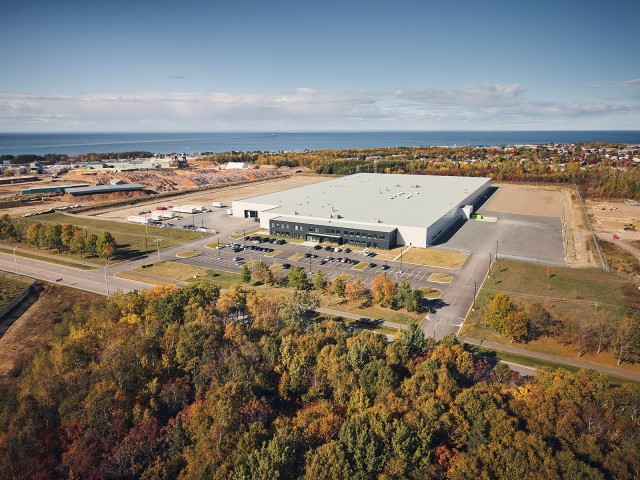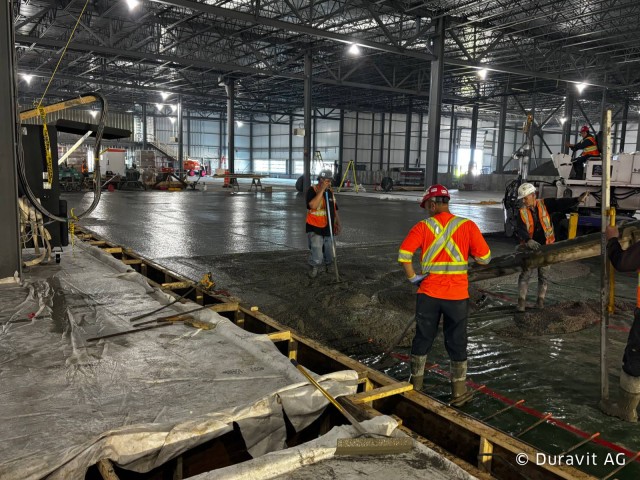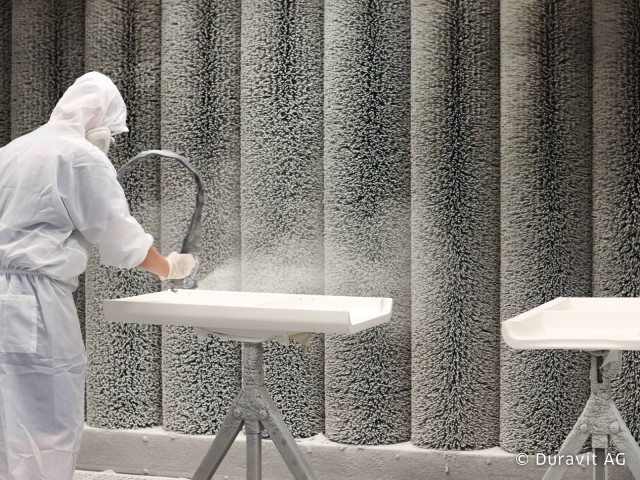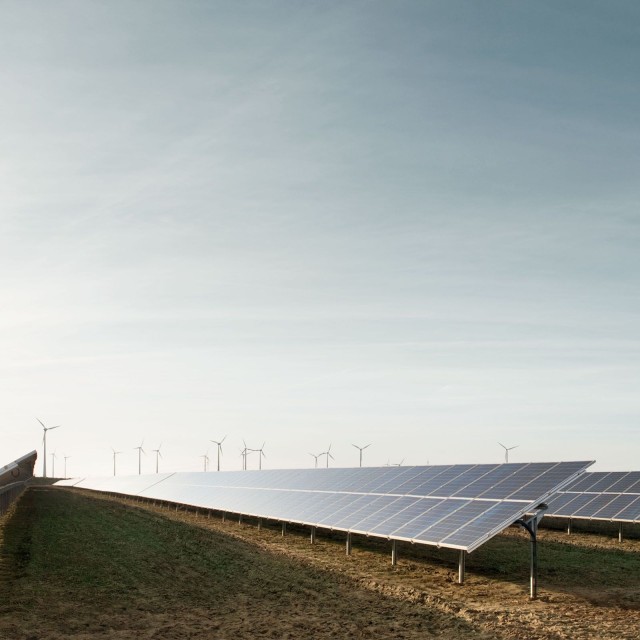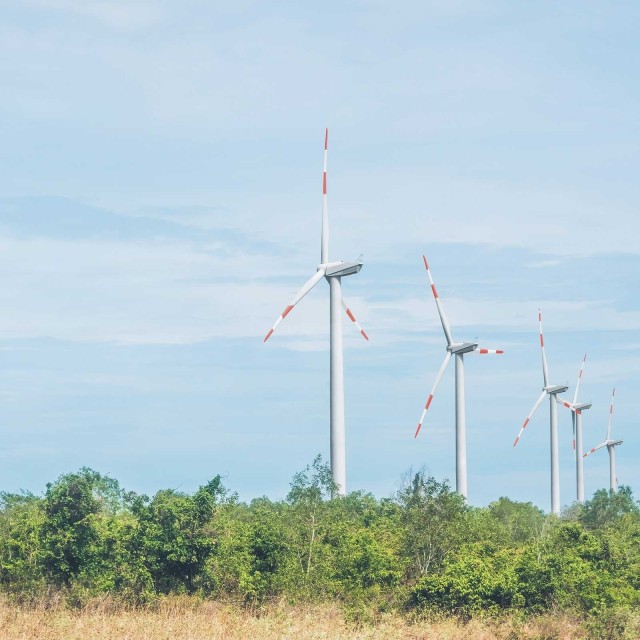December 2025
A real game changer: Climate-neutral ceramic production
Duravit’s new production plant in Canada is climate-neutral. Hydropower is making gas-fired kilns a thing of the past. But LBBW’s expertise remains indispensable.


Ceramic production requires a lot of energy. In the past, ceramic kilns have always been gas-fired. But could there be a different, more sustainable alternative? Duravit, a ceramic ware manufacturer from Germany’s Swabia region, has joined forces with the Nuremberg-based company Riedhammer, a subsidiary of the plant manufacturer Sacmi, to answer this question. Their solution: Duravit’s new plant in Matane, Canada, will be home to the world’s first electric kiln powered solely by electricity from renewable sources – in this case, the hydroelectric power plants operated by the utility company Hydro-Québec. As a result, Duravit will save more than 9,000 metric tons of carbon dioxide (CO2) every year.
Formed in 1817 and based in Hornberg in Germany’s Black Forest, Duravit enjoys a global reputation for its high-quality ceramic sanitary ware for bathrooms and lavatories. Now it has set itself a bold target: making its manufacturing operations climate-neutral by 2045 at the latest. “This calls for a disruptive transformation in ceramic production that addresses the issue of CO2 emissions at the roots,” explains Duravit CEO Stephan Tahy. He describes the new plant in Canada as “a real game changer.”
Local-for-local: Duravit adopts a sustainable mindset
The ceramic roller kiln, which is around 100 meters long, is not the only thing that makes the plant more sustainable. Its location directly on the St. Lawrence River also makes logistics and goods transportation easier. Matane has a deep water port and is less than 300 kilometers from the United States. The most important raw materials for ceramics, namely clay, kaolin, feldspar and quartz, are available at close quarters. This will also help to lower emissions and ensure a more environmentally friendly supply chain.
The highly automated, energy-efficient plant in Matane conforms to Industry 4.0 principles. This includes driverless transport systems, glazing robots and an automated chamber dryer. And the target markets – Canada and especially the United States – are just around the corner. The plan is for Duravit’s Canadian plant to sell 450,000 products in North America by 2029 at the latest – almost three times as many as today. By then, a second kiln powered by electricity from hydropower will have ramped up in full. “Local-for-local production is our maxim,” says CEO Stephan Tahy.
Forward loan from LBBW
Two years ago, this local-for-local mindset prompted the company – which generated revenue of EUR 655.7 million in 2023 across eleven locations – to consider whether it was still correctly positioned. Why was it transporting washbasins from Egypt to the United States or from France to Canada? Would a local plant not make far more sense? When Björn Krause heard about these deliberations and the formation of the new Duravit Canada Inc., the decision was still some way from being final. Nonetheless, the long-standing key account manager from BW-Bank immediately approached Duravit with the offer of a meeting and a financing proposal.
We are proud to be playing a pioneering role in shaping a sustainable sanitary industry and actively meeting the challenges of climate change.
In further discussions between the bank and the company, it was established that Duravit would receive local subsidies for constructing the sustainable plant. “The innovative, electrically operated kilns for the plant are made in Germany and financed by us in Stuttgart,” explains key account manager Krause. LBBW provided Duravit with a forward loan for this purpose. “In addition to the subsidies, Duravit wanted to ensure financing with trusted central contacts from its relationship banks in Germany – and as a proven and long-standing banking partner, we were keen to step into this role,” Krause adds.
“A pioneering role in a sustainable sanitary industry”
Corporate client advisor Björn Krause mentions another benefit of the partnership almost in passing: LBBW’s New York Branch. The largest LBBW branch in the Americas, it is the heart of a network that extends from Canada through Mexico to South America. LBBW’s employees in New York are familiar with the financial and regulatory requirements of the North American market. Duravit can call upon this additional expertise whenever it is required, not least since the Corporate Desk in New York was involved in the project right from the start.
Production has been running since November 2025, currently with 102 employees; by the planned full capacity in 2027, the team is set to grow to 240. “We are proud to be playing a pioneering role in shaping a sustainable sanitary industry and actively meeting the challenges of climate change,” says Duravit CEO Stephan Tahy. “We are setting new standards for innovative solutions.”

